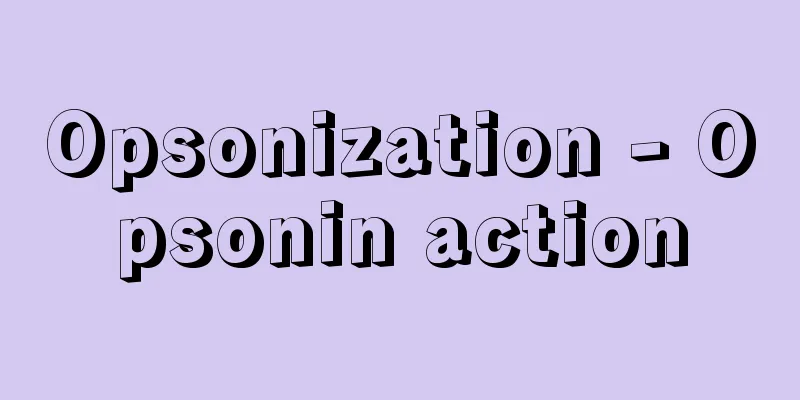Siberian Intervention

|
The war of intervention against the Russian Revolution during the Taisho period. When the Russian October Revolution occurred in November 1917 (Taisho 6), a plan for intervention against the revolutionary government was presented to the Supreme Military Council of the Allied Powers in December of the same year, and in January of the following year, Britain and France requested that Japan and the United States send troops to Siberia. [Masaomi Yui] Japan's ResponseJapan and the United States did not respond positively to the proposals of Britain and France, but at that time, the opinion of sending troops to Siberia was strong among the Ministry of Foreign Affairs, including Foreign Minister Motono Ichiro, young officials, and overseas diplomatic missions, and plans for sending troops to Siberia were being drawn up at the General Staff, led by Chief of Staff Uehara Yusaku and Deputy Chief of Staff Tanaka Giichi. Their intention was to send troops independently, to bring northern Manchuria and Siberia into Japan's sphere of control without being restricted by the Allied powers. However, the United States was wary of Japan and was firmly opposed to Japan's leading control of the Siberian and Middle Eastern (Northeastern China) railways. As a result, some of the Japanese ruling class, fearing a conflict between Japan and the United States, opposed the idea of sending troops independently, and at the Provisional Foreign Affairs Investigation Committee, Hara Takashi and Makino Nobuaki argued for a coordinated dispatch with the United States, and the idea of sending troops independently did not come to fruition. However, in reality, in January 1918, the US sent two cruisers to Vladivostok under the pretext of protecting local residents, and in April, it landed naval troops on the pretext of a massacre of local residents, exerting military pressure on the local revolutionary forces. [Masaomi Yui] Dispatch of troopsIn May 1918, a rebellion broke out among Czechoslovakian prisoners of war being repatriated to their homeland via the Trans-Siberian Railway. In July, the United States proposed to Japan to send troops together, under the pretext of rescuing the Czech army. The Japanese government immediately agreed, and on August 2nd, it declared its intention to send troops. According to the Allied agreement, 12,000 Japanese troops, 7,000 American troops, and 5,800 British and French troops were to be sent to the region, but once the dispatch of troops began, Japan ignored the agreement and unilaterally dispatched a large army of 72,000 troops to interfere in the Soviet revolution in various places east of Lake Baikal. Domestic public opinion was opposed to the dispatch of troops to Siberia from start to finish, with many newspapers and magazines, including the Osaka Asahi Shimbun and the Toyo Keizai Shinpo. Furthermore, the Japanese people, who had always been enthusiastic about foreign wars, took an extremely cold attitude toward this dispatch of troops. Ignoring this domestic opinion, the Japanese military supported the counter-revolutionary forces of Horvat and Semenov, plotting to make eastern Siberia a Japanese sphere of influence, and also supported the Kolchak government established in Omsk in western Siberia, hoping that it would develop into an all-Russian government. From around January 1919, partisan activity became more active throughout Siberia, and by the end of the same year, General Kolchak's Omsk government had collapsed, and the will to fight of the interventionist forces had waned. Meanwhile, the Soviet government had succeeded in suppressing the counter-revolutionary forces throughout the country by the beginning of 1920, and the Allied nations, realizing that the intervention war was futile, began to withdraw their expeditionary forces. The United States also announced its withdrawal on January 9, 1920, citing the completion of the withdrawal of Czech troops, and British and French forces had completely withdrawn by June of the same year. During this time, the Hara Kei Cabinet, which was established after the Terauchi Masatake Cabinet resigned en masse due to the shock of the rice riots, decided on the first troop reduction plan to reduce the number of expeditionary forces by about 14,000 in October 1944, and then decided on the second troop reduction plan to reduce the total number of expeditionary forces to about 26,000 in December. However, despite the withdrawal of troops from other countries, Japan clung to control eastern Siberia, and declared that it would continue to send troops under the pretext of preventing the spread of revolution to Korea and Manchuria (northeastern China) and protecting Siberian residents, disarming the Soviet troops in Primorsky Krai and occupying each city. During this time, the Nikko incident from February to May 1945 dealt a heavy blow to the Japanese military. After this incident, Japan used it to promote the brutality of the Bolsheviks and partisans to stir up anti-Soviet public opinion in the country and continue sending troops. The General Staff also pressured the government to halt the withdrawal of troops from Amur Oblast, and announced that they would occupy North Sakhalin until the incident was resolved. [Masaomi Yui] WithdrawalAt the 44th Congress in 1921, Takaaki Kato, president of the Constitutional Association, demanded that the government take responsibility for the Nikolaev incident and that the unfounded presence of troops should be stopped and that troops should be withdrawn from Siberia. Labor also launched a movement for non-intervention in Russia. At the Washington Conference held in November of that year, under pressure from other countries, Japan finally announced its intention to withdraw its troops from Siberia in June 1922, and completed its withdrawal from the Siberian mainland in October of the same year. During this time, the Dalian Conference, which addressed the issue of withdrawing troops from Siberia, was held between August 1921 and April of the following year, and the Changchun Conference, which focused on the issue of withdrawing troops from North Sakhalin, was held in September 1922, but both conferences ended in failure. The issue of withdrawing troops from North Sakhalin was finally resolved in the negotiations for the restoration of diplomatic relations between Japan and the Soviet Union after 1923, but it was not until May 1925 that the withdrawal of troops from North Sakhalin was completed. During this eight-year war, Japan spent approximately 1 billion yen on the cost of the war and suffered sacrifices of over 3,000 deaths, but not only did it not gain anything, it also incurred the hostility of the Soviet people and the distrust of other nations, resulting in a complete defeat for Japanese imperialism. [Masaomi Yui] "The History of the Siberian Expedition from 1918 to 1922, compiled by the General Staff, 3 volumes (1938/reprint edition, 6 volumes, 1972, Shinjidaisha)" ▽ "Japanese Militarism II, by Inoue Kiyoshi (1953, University of Tokyo Press)" ▽ "A Historical Study of the Siberian Expedition, by Hosoya Chihiro (1955, Yuhikaku)" ▽ "The Russian Revolution and Japan, by Hosoya Chihiro (1972, Hara Shobo)" ▽ "Dispatch of Troops, Parts 1-4, by Takahashi Osamu (1973-1977, Asahi Shimbun)" [References] | | | |Source: Shogakukan Encyclopedia Nipponica About Encyclopedia Nipponica Information | Legend |
|
大正期のロシア革命に対する干渉戦争。1917年(大正6)11月、ロシア十月革命が起こると、同年12月連合国最高軍事会議に革命政権への干渉計画が出され、翌年1月英仏は日米両国にシベリア出兵を要請してきた。 [由井正臣] 日本の対応英仏の提案に対して日米は積極的反応を示さなかったが、この時期外務省では本野(もとの)一郎外相をはじめ若手官吏、在外公館にシベリア出兵の意見が強く、参謀本部でも上原勇作(うえはらゆうさく)総長、田中義一(ぎいち)次長を中心にシベリア出兵の計画が練られていた。彼らの意図は、連合国の制約を受けることなく北満、シベリア地域を日本の支配圏に収めようとする自主出兵論であった。ところがアメリカは日本に警戒的で、日本主導によるシベリアと中東(中国東北)鉄道の支配にあくまで反対であったため、日米対立を恐れた日本支配層の一部は自主出兵論に反対し、臨時外交調査委員会では原敬(はらたかし)や牧野伸顕(まきののぶあき)がアメリカとの協調出兵論を主張して、自主出兵論は実現できなかった。しかし、現実には1918年1月に居留民保護を名目にウラジオストクに巡洋艦2隻を派遣、4月には居留民殺傷事件を名目に海軍陸戦隊を上陸させて、当地の革命勢力に軍事的圧力をかけた。 [由井正臣] 出兵1918年5月、シベリア鉄道経由で本国へ送還中のチェコスロバキア軍捕虜の反乱事件が起こると、7月にアメリカもチェコ軍救出を名目に日本に共同出兵を提案してきた。日本政府はただちにこれに応じ、8月2日出兵宣言を発した。連合国の協定では、日本軍1万2000、アメリカ軍7000、英仏連合軍5800であったが、出兵が始まると日本は協定を無視して、独断で7万2000の大軍を派遣し、バイカル湖以東の各地でソビエト革命に干渉した。国内世論は『大阪朝日新聞』『東洋経済新報』をはじめ多くの新聞、雑誌が終始シベリア出兵に反対した。また対外戦争にはつねに熱狂した国民も今回の出兵にはきわめて冷ややかな態度をとった。こうした国内世論を無視して日本軍はホルバート、セミョーノフらの反革命軍を援助し、東部シベリアを日本の勢力範囲にしようと企て、また西部シベリアのオムスクに成立したコルチャーク政権を支持して、それが全露政権に発展することに期待をかけた。19年の1月ごろから、シベリア各地のパルチザン活動は活発になり、同年末にはコルチャーク将軍のオムスク政権は崩壊し、干渉軍の戦意も低下した。他方ソビエト政府は20年初めまでに国内各地の反革命軍の鎮圧に成功し、連合諸国も干渉戦争がむだであることを悟り、派遣軍の引揚げを開始した。アメリカもチェコ軍の引揚げ完了を理由に、20年1月9日撤兵を声明、英仏軍は同年6月までに完全に退去した。この間日本においては、米騒動の衝撃で寺内正毅(てらうちまさたけ)内閣が総辞職したあと成立した原敬内閣のもとで、19年10月約1万4000の派遣軍削減を内容とする第一次減兵案を決め、ついで12月には派遣軍総数を約2万6000とする第二次減兵案が決定された。しかし、各国の撤兵にもかかわらず、日本は東部シベリアの支配に執着し、朝鮮・満州(中国東北)への革命波及の防止とシベリア居留民の保護を名目に出兵継続を宣言し、沿海州のソビエト軍を武装解除して各都市を占領した。この間20年2月から5月の尼港(にこう)事件で日本軍は手痛い打撃を受けた。この事件が起こると日本はボリシェビキやパルチザンの残虐性を宣伝して国内の反ソ世論をあおり、出兵を継続するために利用した。また参謀本部は政府に圧力をかけてアムール州からの撤兵を中止させた。そのうえ、この事件が解決するまで北樺太(からふと)を保障占領すると声明した。 [由井正臣] 撤兵1921年の第44議会で憲政会の加藤高明(たかあき)総裁は、尼港事件に対する政府の責任を追及するとともに、理由のない駐兵はやめてシベリアから撤退すべきであると主張した。また労働者も対露非干渉運動を展開するに至った。同年11月開催のワシントン会議でも列国の圧力があり、日本は22年6月ようやくシベリア撤兵の意志を表明、同年10月シベリア本土からの撤兵を完了した。この間、極東共和国との間で、シベリア撤兵問題を取り上げた大連(だいれん)会議が21年8月から翌年4月まで、また北樺太撤兵問題を中心議題とする長春(ちょうしゅん)会議が22年9月に開かれたがいずれも決裂した。23年以後の日ソ国交回復のための交渉においてようやく北樺太撤兵問題も解決をみたが、北樺太からの撤兵が完了したのは25年5月であった。この間、足掛け8年、日本は戦費約10億円を費やし、死者は3000人を超えるという犠牲を払いながら、なんら得るところがなかったばかりか、ソビエト人民の敵意と列国の不信を買った日本帝国主義の完全な敗北であった。 [由井正臣] 『参謀本部編『大正七年乃至十一年西伯利出兵史』全3巻(1938/復刻版・全6巻・1972・新時代社)』▽『井上清著『日本の軍国主義Ⅱ』(1953・東京大学出版会)』▽『細谷千博著『シベリア出兵の史的研究』(1955・有斐閣)』▽『細谷千博著『ロシア革命と日本』(1972・原書房)』▽『高橋治著『派兵』第1~4部(1973~77・朝日新聞社)』 [参照項目] | | | |出典 小学館 日本大百科全書(ニッポニカ)日本大百科全書(ニッポニカ)について 情報 | 凡例 |
>>: Siberian high pressure - Siberian high pressure
Recommend
Carbonaceous matter
…C chondrites generally contain little metallic i...
Divorce temple - Enkiridera
In the Edo period, a wife could run to a temple a...
Eudaimmon - Eudaimmon
…In particular, all sudden, mysterious, fateful p...
Nguyen Thai Hoc
1902‐30 Leader of the Vietnam National Party and l...
Archaeosphaeroides larbertonensis (English spelling)
… [Appearance of algae] According to fossil recor...
Myoko Kogen [town] - Myoko Kogen
It is an old town in Nakakubiki County in the sout...
Atsushi Omoto
…Jesuit from the Portuguese Azores. His Chinese n...
Prayer of the Sky
...When this wig is left hanging long at the back...
Company merger - kaishagappei
...A company merger is when two or more companies...
Bevin, Ernest
Born: March 9, 1881, Winsford [Died] April 14, 195...
Boucher de Perthes, J.
…From this point on, prehistoric archaeology deve...
All things - Kaigu
〘noun〙 The state of having a complete set of somet...
Pragmatic Jurisprudence
A jurisprudence that has pragmatist philosophy as ...
Shipping broker - Kaiunbrookaa
…However, the only concrete market in which trans...
Jing Hao (English spelling)
A Chinese landscape painter from the late Tang Dyn...









